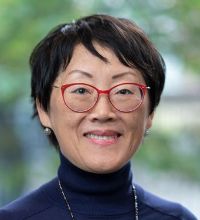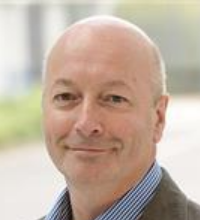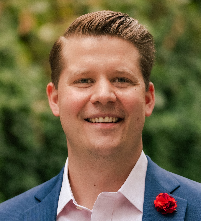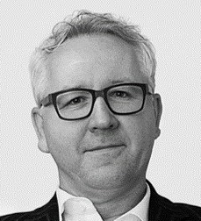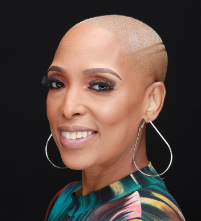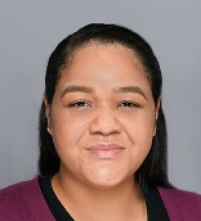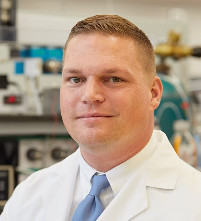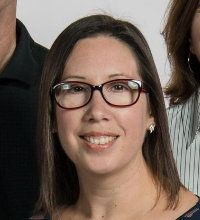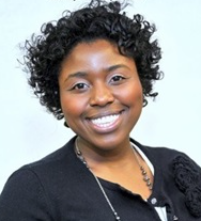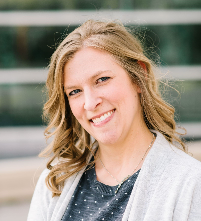MSACL 2024Monterey, CA : March 17-22 |
Agenda
|
Agenda (Preliminary) - View Program
Thursday, March 21
Time |
Sessions |
|||||||||||||||||||||||||||||||||||||||
|---|---|---|---|---|---|---|---|---|---|---|---|---|---|---|---|---|---|---|---|---|---|---|---|---|---|---|---|---|---|---|---|---|---|---|---|---|---|---|---|---|
1730 |
Registration Desk Open Location: Serra Foyer (Conference Ctr > Ground Floor)
|
|||||||||||||||||||||||||||||||||||||||
825 |
Industry Breakfast Workshop : Thermo Fisher Scientific Location: Steinbeck 1 (Conference Ctr > 2nd Floor)
|
|||||||||||||||||||||||||||||||||||||||
915 |
Spatial Proteomics: Considerations for Clinical and Research Applications Location: De Anza 1 (Portola Hotel > Ground Floor)
20 minute Presentation followed by a Group Discussion. |
|||||||||||||||||||||||||||||||||||||||
915 |
Coffee Roundtables & Exhibits Location: Exhibit Hall - Serra (Conference Ctr > Ground Floor)
Table 1: Translational Research: Insights for Today and Tomorrow
In this roundtable we will discuss where we are as a translational research community, the complexities, tools available to researchers, strategies employed, and considerations for the future.
Table 2: YYZ Pharmatech - Is a tsunami coming? The role for LCMS in Alzheimer's Disease diagnostics
With the approval of Aducanumab, Lecanemab and Donanemab, treatment options available for care of patients with Alzheimer's Disease have changed dramatically. This has lead to new hope for patients experiencing cognitive impairment, and a renewed focus on identifying disease progression earlier.
Treatment changes have also begun to influence laboratory operations as new invitro tests based on CSF are serving as surrogates for expensive imaging-based diagnostics. Blood based tests are also on the horizon for the most important markers (i.e. Aβ(1-42)/Aβ(1-40), P‐tau181 and P‐tau217), with the important benefits of sampling patients non-invasively, lowering costs and scaling without new infrastructure.
This all leads to the question: Is a tsunami coming?
Please join YYZ Pharmatech as we host a discussion about the impact of these shifts on the clinical laboratory, including:
Table 3: Building a Toxicology Testing Area - Tox Lab
Even though there is a need for definitive testing in clinical settings, there aren’t many guidelines available on what should be taken into consideration as laboratory directors tackle design and establishment of toxicology laboratory. This session will provide valuable information to early career professionals who may be tasked with starting up a toxicology section. Even though some vendors are available to assist with site design, site preparation responsibilities fall upon the site personnel. Thus, it is important to have a basic understanding of what is needed to start the project. This roundtable session will address many personal ‘lessons-learned’ based on experience working with design and construction team in an Academic Hospital Laboratory, including factors associated with space design (electrical needs, ventilation needs) that should be taken into consideration before unboxing the LC-MS/MS crates. Well-designed space will assist in facilitating seamless transition from instrument validation to method validations.
Objective 1: Understand the requirements for LC-MS/MS installation.
Objective 2: Discuss the journey of building a toxicology testing area from scratch.
Table 4: Don’t Slow Your Role: Moving the Needle on DE&I in a Damaged Workplace Culture
Diversity, equity, and inclusion (DE&I) goals cannot succeed as a standalone strategy in organizations
where the culture is damaged. Signs of a damaged culture include favoritism, unconscious bias, and a
lack of psychological safety. To be impactful, DEI initiatives require a strategic and intentional approach
all year long, reaching all employees, and building equity into external programs and internal processes.
What happens when two, black women who have suffered the most inequities, decide to move the
needle on DE&I? Join this interactive roundtable discussion to hear how both transformed their
experiences in toxic workplaces into achievable DE&I goals.
Attendees of this session will:
Table 5: Do Identical Instruments Produce Comparable Patient Results? A Stumbling Block of Harmonizing LC-MS/MS Assays in Clinical Laboratories
Clinical mass spectrometry laboratories usually validate individual assays on more than one instrument for continuous operation. Instrument comparison is a requirement of the College of American Pathologists and should be monitored at least twice a year to ensure comparability of results. Although the same style of liquid chromatography-tandem mass spectrometry system is preferred to minimize the variations between instruments, labs will inevitably encounter bias between two or more identical LC-MS/MS systems. Even in the absence of bias, the same instrument model with two different serial numbers may require different instrument settings to obtain similar sensitivity and specificity. In this roundtable session, we will review several comparison data sets from the same extractions injected and analyzed on two LC-MS/MS systems of the same make and model. We will discuss the potential factors, including mass spectrometer hardware (probe type and cleanness), software settings (gradients, transitions, cone voltages, and collision energies), and matrix effect that could bias patient results and how to establish quality assurance policies to ensure adequate data review and accurate resulting. Examples of challenges we have faced and approaches we have found useful will be presented as a starting point for discussion.
Table 6: Use of Reference Materials for Calibration and Validation in Clinical Mass Spectrometry Applications
Reference materials (RMs), including certified reference materials (CRMs), are provided by the National Institute of Standards and Technology (NIST) and other RM producers to support global clinical measurement standardization and harmonization. Standardization is when clinical results are uniform across routine clinical methods and traceable to the International System of Units (SI) via higher-order RMs and Reference Measurement Procedures (RMPs). However, harmonization is established to make clinical results more equivalent across clinical methods when no higher-order RMs or RMPs exist. To support both systems, RMs are available in various forms, including neat powders, solutions, and clinical matrices and the intended uses include calibration and validation, depending on the material. The choice of which RM to use and how to incorporate it into a measurement system depends on laboratory goals. Many RMs are ideally suited for mass spectrometry-based measurement procedures. Many matrix matched RMs (blood serum, plasma, urine) are value assigned based on mass spectrometry-based RMPs. These RMPs typically separate and quantify individual peptides, metabolites, epimers, or other chemical variations of clinically relevant measurands that are not necessarily separated and detected by other laboratory techniques, such as immunoassays or microbiological assays. This roundtable is designed to discuss RM production, availability, and options for incorporating RMs into clinical applications. RM users may also need to propagate the measurement uncertainty of RMs or other calibrator values to clinical results. Therefore, the factors that should be accounted for when estimating measurement uncertainty will also be highlighted in the roundtable discussion.
Table 7: Quality Control Strategies for Large, Multiplexed, Omics Panels
Objective: Discussion of quality control strategies for large, multiplexed LC-MS Omics Panels
Summary: Recent Technological developments in LC-MS/MS instrumentation and bioinformatics approaches have enabled rapid, reproducible, and robust quantitative strategies for the measurement of hundreds, if not thousands of analytes that have the capacity to revolutionize the contribution of mass spectrometry based omics measurements to precision medicine. However, a major hurdle to the translation of large panels into a regulated clinical laboratory environment is how to properly deploy quality control (QC) standards. In this workshop, an expert panel of laboratory scientists and clinical chemists, with active discussion of the participating audience, will discuss how we might begin to address these challenges.
Topics Covered:
Table 8: Roche - The Future and Beyond: A discussion on future assay menu needs for mass spectrometry in the busy clinical laboratory
Objectives:
Table 9: Ionpath - From Bench to Map: Simplifying the MSi Spatial Proteomics Workflow Multiplexed ion beam imaging (MIBI) is a technique that has simplified numerous issues present in MS workflows within spatial imaging. Compared to other MSi techniques, MIBI ™ presents a sample preparation workflow identical to fluorescence microscopy while also eliminating the need for messy spectral deconvolution to identify antibody targets. ToF-SIMS as the backbone of MIBI allows for multiple scans on a single ROI to glean more than surface-level information. Coupled with existing and custom data analytics tools, Ionpath’s spatial proteomics services help biologists answer fundamental questions about cellular and spatial interactions. Join this interactive session to discuss the spatial proteomics workflows used to extract information from this complex data and how MIBI can complement it. Attendees of this session will:
Table 10: Forever and Always - PFAS Monitoring in Human Matrix
Is human testing of per- and polyfluoroalkyl substances (PFAS) the next frontier for detecting and quantifying the “forever chemicals” that are now everywhere? PFAS regulations have been proposed or currently exist for drinking water, food packaging, and consumer products. PFAS cleanup and remediation are now being proposed for the 400+ PFAS compounds on the Environmental Protection Agency (EPA) list, however thousands of compounds exist. This brainstorming roundtable will focus on how biomonitoring would best be achieved.
Key Discussion Points:
|
|||||||||||||||||||||||||||||||||||||||
1030 |
Poster Session 3 with Poster Tours Location: Exhibit Hall - Serra (Conference Ctr > Ground Floor)
Sign-up and meet at Tour Rally Point in Booth 8 for Poster Tours. |
|||||||||||||||||||||||||||||||||||||||
1130 |
Scientific Session 3 Location: Steinbeck 1 (Conference Ctr > 2nd Floor)
|
|||||||||||||||||||||||||||||||||||||||
1130 |
Scientific Session 3 Location: Steinbeck 2 (Conference Ctr > 2nd Floor)
|
|||||||||||||||||||||||||||||||||||||||
1130 |
Scientific Session 3 Location: Steinbeck 3 (Conference Ctr > 2nd Floor)
|
|||||||||||||||||||||||||||||||||||||||
1130 |
Scientific Session 3 Location: Colton (Conference Ctr > 2nd Floor)
|
|||||||||||||||||||||||||||||||||||||||
1130 |
Scientific Session 3 Location: De Anza 1 (Portola Hotel > Ground Floor)
|
|||||||||||||||||||||||||||||||||||||||
1130 |
Exhibitor Feedback Meeting Location: De Anza 3 (Portola Hotel > Ground Floor)
Exhibitors invited to join MSACL admin to provide feedback on MSACL 2024 and begin planning for MSACL 2025 in Montreal (September 21-26, 2025). |
|||||||||||||||||||||||||||||||||||||||
1330 |
Exhibits & Lunch Buffet Location: Exhibit Hall - Serra (Conference Ctr > Ground Floor)
|
|||||||||||||||||||||||||||||||||||||||
1330 |
Poster Session 4 Location: Exhibit Hall - Serra (Conference Ctr > Ground Floor)
Meet at Tour Rally Point in Booth 8. |
|||||||||||||||||||||||||||||||||||||||
| Exhibits Close Location: Exhibit Hall - Serra (Conference Ctr > Ground Floor)
|
||||||||||||||||||||||||||||||||||||||||
1430 |
Scientific Session 4 Location: Steinbeck 1 (Conference Ctr > 2nd Floor)
|
|||||||||||||||||||||||||||||||||||||||
1430 |
Scientific Session 4 Location: Steinbeck 2 (Conference Ctr > 2nd Floor)
|
|||||||||||||||||||||||||||||||||||||||
1430 |
Scientific Session 4 Location: Steinbeck 3 (Conference Ctr > 2nd Floor)
|
|||||||||||||||||||||||||||||||||||||||
1430 |
Scientific Session 4 Location: Colton (Conference Ctr > 2nd Floor)
|
|||||||||||||||||||||||||||||||||||||||
1430 |
Scientific Session 4 Location: De Anza 1 (Portola Hotel > Ground Floor)
|
|||||||||||||||||||||||||||||||||||||||
1445 |
Intermission Location: Steinbeck Foyer (Conference Ctr > 2nd Floor)
|
|||||||||||||||||||||||||||||||||||||||
1545 |
Scientific Session 5 Location: Steinbeck 1 (Conference Ctr > 2nd Floor)
|
|||||||||||||||||||||||||||||||||||||||
1545 |
Scientific Session 5 Location: Steinbeck 2 (Conference Ctr > 2nd Floor)
|
|||||||||||||||||||||||||||||||||||||||
1545 |
Scientific Session 5 Location: Steinbeck 3 (Conference Ctr > 2nd Floor)
|
|||||||||||||||||||||||||||||||||||||||
1545 |
Scientific Session 5 Location: Colton (Conference Ctr > 2nd Floor)
|
|||||||||||||||||||||||||||||||||||||||
1545 |
Scientific Session 5 Location: De Anza 1 (Portola Hotel > Ground Floor)
|
|||||||||||||||||||||||||||||||||||||||
1600 |
Intermission Location: Steinbeck Foyer (Conference Ctr > 2nd Floor)
|
|||||||||||||||||||||||||||||||||||||||
1700 |
Scientific Session 6 Location: Steinbeck 1 (Conference Ctr > 2nd Floor)
|
|||||||||||||||||||||||||||||||||||||||
1700 |
Scientific Session 6 Location: Steinbeck 2 (Conference Ctr > 2nd Floor)
|
|||||||||||||||||||||||||||||||||||||||
1700 |
Scientific Session 6 Location: Steinbeck 3 (Conference Ctr > 2nd Floor)
|
|||||||||||||||||||||||||||||||||||||||
1700 |
Scientific Session 6 Location: Colton (Conference Ctr > 2nd Floor)
|
|||||||||||||||||||||||||||||||||||||||
1700 |
Scientific Session 6 Location: De Anza 1 (Portola Hotel > Ground Floor)
|
|||||||||||||||||||||||||||||||||||||||
1730 |
Happy Half-Hour & Trivia Dinner Check-In Location: San Carlos Foyer (Marriott > Mezzanine > Stairs from Lobby or SkyBridge from Conference Ctr)
Enjoy a relaxing moment during check-in for the Closing Pub-Style Trivia Dinner in the San Carlos foyer. |
|||||||||||||||||||||||||||||||||||||||
2000 |
Dinner & Pub-Style Trivia Night Location: San Carlos (Marriott > Mezzanine | Stairs from Lobby or SkyBridge from Conference Ctr)
Fee-based Pre-Registration Required for Entry Includes presentation of Poster Awards and Closing statements by the Steering Committee Chair. |
|||||||||||||||||||||||||||||||||||||||
2330 |
MSACL Hospitality Lounge Location: Club Room (Portola Hotel > Ground Floor)
Drinks provided. |
|||||||||||||||||||||||||||||||||||||||
| Monterey Conference Center Closes Location: Serra Foyer (Conference Ctr > Ground Floor)
|
||||||||||||||||||||||||||||||||||||||||


